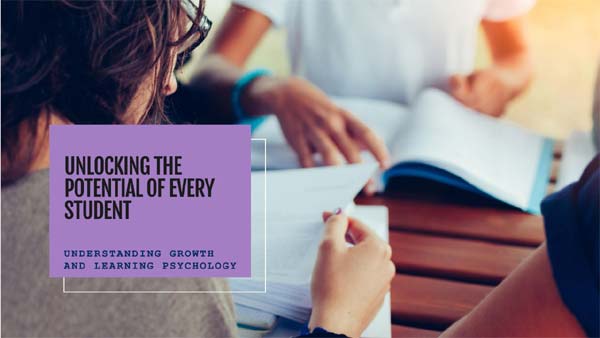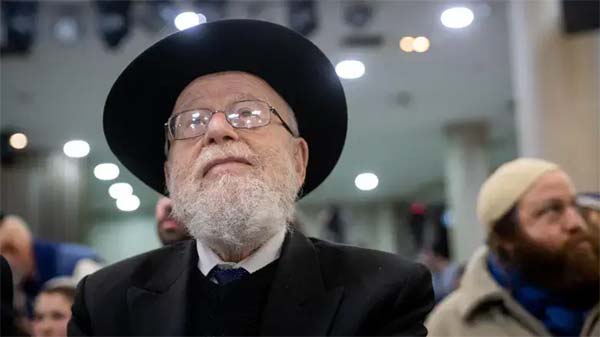Dr. Tarek El Baba
Abstract
The psychology of growth and learning is important in determining good classroom management and development of the students. This article will cover key psychological theories: Piaget's stages of cognitive development, sociocultural theory by Vygotsky, psychosocial development by Erikson, and motivation theories such as Maslow's hierarchy of needs and self-determination theory. It expounds on how these frameworks can be utilized in effecting teaching practices for increased student engagement in cognitive, emotional, and social development. Practical applications of the theories at the class level include strategies on differentiated instruction, scaffolding, and creating a positive classroom environment. This integration of insights from psychology within classroom management will, therefore, enable educators to avail learning opportunities that foster students' all-round development, ensuring academic and personal success.
Theories of Development and Learning
Several key theories about psychological development and learning form the basis by which instructors can understand student development. These theories provide a framework on how to create relevant and appealing learning experiences since one must consider the developmental level of students.
Piaget's Stages of Cognitive Development
Jean Piaget's theory of cognitive development lends much insight into the way children think and learn at different stages. Piaget identified four stages in cognitive development that include sensorimotor, preoperational, concrete operation, and formal operation. Each of these stages corresponds with a different way in which children process information and understand the world around them.
Example: In the preoperational stage about age 2 to about age 7, children begin to use symbols and language, but they cannot think logically. To illustrate an abstract concept to children, a teacher may use visual aids, games that incorporate the aspect of play, and hands-on activities as they tend to have a problem participating in a purely verbal explanation. For example, a science teacher can demonstrate how water changes from a liquid to a solid using simple experiments that the children will observe and participate in.
Classroom Application: Teachers can apply the use of Piaget's stages in structuring developmentally appropriate lessons. For example, children in the concrete operational stage-around 7 to 11 years-can perform logical operations but cannot think abstractly. It is to this effect that the teacher can explain the abstract using concrete objects, manipulatives, and real-life examples. An example is explaining addition and subtraction in mathematics using blocks.
Vygotsky's Sociocultural Theory and the Zone of Proximal Development (ZPD)
Lev Vygotsky's sociocultural theory emphasizes the important role of social interaction in learning. Vygotsky believed that the best way people learn is through social interaction with others including peers, parents, and teachers. Developed in the course of this theory is one of the important conceptions, which is the Zone of Proximal Development: "the level of tasks the learner will be capable of performing only when guided by a more knowledgeable other such as a teacher or peer".
Example: A student is learning algebra. In the ZPD, he would comprehend simple concepts but might not be able to solve complex problems without support. Thus, it can be scaffolded by the teacher in front by showing the method of solving a problem and gradually removing support as he develops confidence and competence. A peer tutoring system where students help each other is another example of Vygotsky's theory in practice.
Classroom Application: A teacher can evaluate the ZPD for each student and thus modify instruction accordingly. For example, in presenting new information, a teacher may begin by scaffolding the lesson for the students. As the student becomes more confident and demonstrate their understanding, they are provided opportunities to work on the concept independently with less scaffolding. Activities that involve collaboration and group projects are also helpful in implementing Vygotsky's sociocultural theory because they promote peer-to-peer learning.
Holistic Understanding of Growth: Emotional, Social, and Physical Development
One must note that psychological growth is not confined to cognitive functions per se. Equally significant would be the processes of emotional and social development that provide a holistic and engaging learning experience. It is in acknowledging that the emotional and social needs of children are connected with their competence that teachers can offer an enabling environment in which students thrive.
Erikson's Psychosocial Stages of Development
Erik Erikson developed the theory of psychosocial development based on emphasis on the challenges and conflicts of individuals in their life cycle. Each of these conflicts should be resolved for healthy psychological development. For example, during adolescence, students experience a sense of identity versus role confusion; this is the stage when they are exploring their identity and place in the world.
Example: A high school teenager may struggle with self-identity and peer association. Teachers can help provide an accepting atmosphere, allowing self-expression, and building self-confidence through projects where students can use their interests and talents to support identity development.
Classroom Application: Such psychosocial challenges can be taken on by an enabling classroom environment created by a teacher. For instance, a teacher might establish a mentorship system where senior students assist younger ones to settle into school life and thereby feel affiliated or socially integrated. Supportive listening and opportunities for personal growth provide ways in which students respond to psychosocial conflict.
Motivation and Learning Theories
Motivation plays an important role in students' approaches and retention of information. Understanding the dynamics of motivation can help teachers in planning lessons and setting up environments that are more motivating to active participation and eagerness for learning.
The motivational theory by Abraham Maslow is pegged on the notion that human beings have different levels of basic physiological needs for self-actualization. Maslow hypothesized that it is only when the lower level needs like food, safety, and belonging are met that higher levels of learning and achievement can take place.
Example: A hungry or safety-concerned student will not be able to focus on learning. Thus, a teacher needs to consider a safe and nurturing classroom environment where the learners feel emotionally secure. This may include regular breaks, emotional support, and access to basic needs.
Classroom Application: Maslow's hierarchy can be used by the teacher to provide a classroom atmosphere that helps in meeting the students' basic needs. For instance, a classroom that is physically safe, emotionally encouraging, and culturally responsive promotes security and readies the students to learn. The students are also able to satisfy the need for belonging when positive relationships between peers are fostered.
Self-Determination Theory
Self-determination theory, for instance, proposed by Deci and Ryan, highlighted the role of autonomy, competence, and relatedness in enhancing motivation. According to this theory, students are motivated if they perceive that they have control over their learning, they feel competent, and they experience good relationships both with teachers and peers.
Example: Giving students choices either in assignments or projects enables them to act out of autonomy. Once students perceive their capabilities of completing tasks - competence - and experience a connected relationship with both the teacher and peers - relatedness - their intrinsic motivation is facilitated.
Application in the classroom: Teachers can utilize self-determination theory by offering students choices in their learning. For example, letting students choose from a variety of topics or formats for projects (e.g., presentations, essays, videos). This gives students autonomy. Providing students with feedback that focuses on effort and improvement will build competence. A sense of relatedness can be built by fostering a classroom community where students collaborate and support one another.
Practical Approaches to Learning Theories of This Kind and Integration into the Classroom
Professional Growth and Workshops: Knowledge about developmental and learning theories can be gainfully sought through professional development and workshops on cognitive and emotional growth. These make one understand the current research and best practices in one's area of subject matter.
Collaborative Learning: With Vygotsky's ZPD, teachers would be able to collaborate with their colleagues through team teaching or co-teaching. Shared insight and learned teaching strategies improve the ability for effective scaffolding and supporting students.
Operating on Reflection and Adjustment: Application of Piaget's, Erikson's, and Vygotsky's theories may be learned by reflecting upon classroom practices. For instance, teachers can observe students engaging in various teaching methods and adjust strategies appropriately to accommodate lessons to developmental needs.
- Student Feedback: Getting feedback from students regularly helps teachers to understand their emotional social, and cognitive development. This allows teachers to know whether the needs of the students are being satisfied and where extra support is required.
Conclusion
The growth and learning psychology helps to better understand how to create an effective, nourishing, and inclusive classroom environment. Cognitive, emotional, and motivational theories of growth should be incorporated into teaching practice to meet students where they are for academic and personal growth. These theories further improve classroom management, build student engagement, and foster their well-being. In the end, a profound understanding of psychological growth provides educators with quality relationships with students that ensure success for each of them academically and personally.
References:
Piaget, J. (1972). The psychology of the child. Basic Books.
Vygotsky, L. S. (1978). Mind in society: The development of higher psychological processes. Harvard University Press.
Erikson, E. H. (1950). Childhood and society. W.W. Norton & Company.
Maslow, A. H. (1943). A theory of human motivation. Psychological Review, 50(4), 370-396.
Deci, E. L., & Ryan, R. M. (2000). The "What" and "Why" of Goal Pursuits: Human Needs and the Self-Determination of Behavior. Psychological Inquiry, 11(4), 227-268.





















